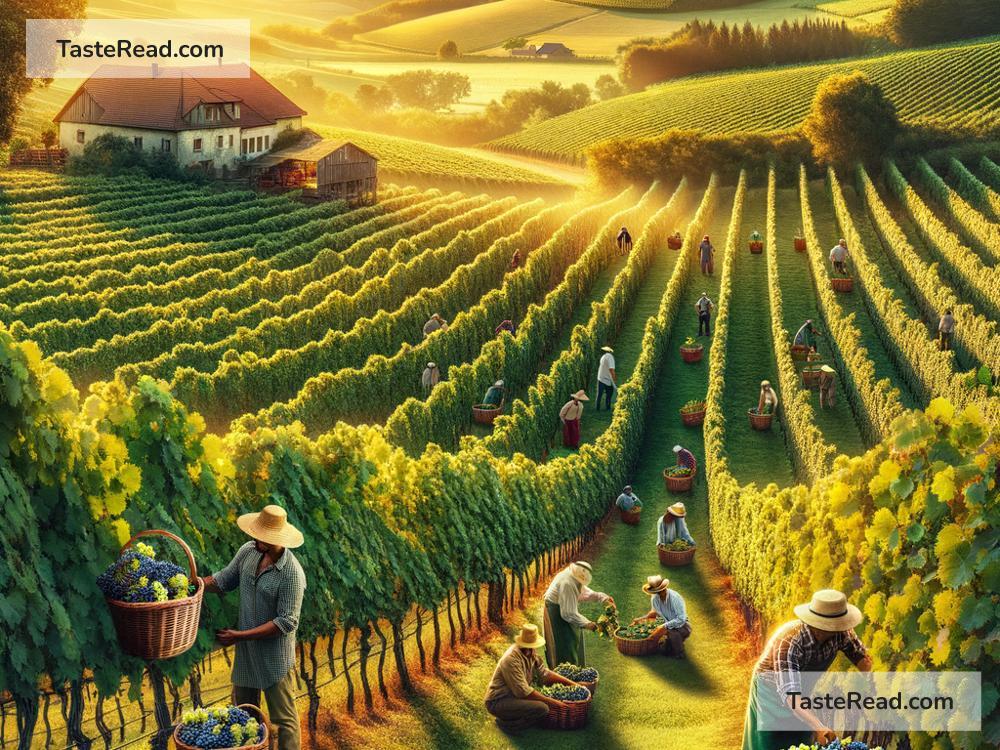The Fascinating History of Grape Cultivation
Grapes are one of the most popular fruits in the world today, but did you know that their history is thousands of years old? From ancient civilizations to modern-day vineyards, the story of grape cultivation is filled with innovation, culture, and connection to nature. Let’s explore how this small fruit has shaped agriculture, trade, and human history over thousands of years.
The Origins of Grapes
Grapes are believed to have first grown in the wild millions of years ago, long before humans began farming them. Wild grapevines originated in regions around the Black Sea, Caspian Sea, and Mediterranean. Fossil evidence shows that grapes existed in these areas more than 60 million years ago, but humans only started cultivating them about 6,000-8,000 years ago.
Archaeologists and historians believe that grape cultivation began in ancient Mesopotamia, an area that includes parts of modern-day Iraq, Turkey, and Iran. Grapes were an abundant fruit, and ancient farmers noticed how they grew naturally in the wild. People soon started planting and taking care of vines to ensure greater yields.
The cultivation of grapes eventually grew into something much more significant—not just for eating the fruit itself, but for fermenting it into wine. Ancient civilizations quickly discovered that grapes could be turned into an alcoholic beverage, and this realization changed the way humans thought about agriculture.
Grapes in Ancient Civilizations
The ancient Egyptians were one of the first societies to cultivate grapes on a large scale, particularly to produce wine. Paintings and hieroglyphs from around 4,000 years ago depict grape harvesting and wine production. Wine was an important part of Egyptian ceremonies and rituals, particularly in temples and royal celebrations. Grapes even found their way into Egyptian mythology, with gods like Osiris being associated with agriculture and winemaking.
Meanwhile, in ancient Greece, grapes became central to their culture and economy. Greek farmers planted vineyards across the mountainous regions of the country, creating conditions perfect for grape production. Wine was a staple of Greek life, enjoyed during meals and shared in social gatherings, or symposiums, where people would come together to talk and drink. The Greeks even worshipped Dionysus, the god of wine and pleasure, further showing how important grapes were in their society.
The Romans also embraced grape cultivation, taking inspiration from the Greeks. Roman farmers improved grape-growing techniques and expanded vineyards across Europe. With the strong trade networks of the Roman Empire, grapes and wine were introduced to new regions, including France, Spain, and Germany. These areas eventually became major wine producers in their own right, thanks to the groundwork laid by Roman farmers.
Grapes in the Middle Ages
After the fall of the Roman Empire, grape cultivation continued to flourish, especially in Europe. During the Middle Ages, monasteries and religious institutions played a crucial role in improving grape-growing methods. Monks cared for vineyards and produced wine for religious rituals, such as communion in churches. Over time, they developed new techniques for pruning vines, fermenting wine, and preserving grapes during transport.
Many of the wine regions we know today—like Burgundy in France or Tuscany in Italy—were developed during this period. Grapes became an important part of daily life for many people, with wine serving as a common beverage, especially in regions where clean drinking water was hard to find.
Grapes in the New World
The story of grape cultivation took a global turn during the Age of Exploration. When European explorers traveled to the Americas in the 15th and 16th centuries, they brought grapevines with them. European settlers planted vineyards in regions like Mexico, California, and South America, where the climate was perfect for growing grapes.
In California, grape cultivation grew rapidly during the 19th century. Immigrants from Italy, Spain, and France brought their knowledge of grape farming and planted vineyards throughout the state. Today, California is one of the largest wine-producing regions in the world, thanks to centuries of experience in grape cultivation.
Modern Grapes and Wine Production
Grape cultivation has come a long way since the days of ancient Mesopotamia. Advances in technology, science, and farming practices have made it easier to grow grapes in almost any climate. Today, grapes are grown all over the world, from Australia to South Africa, and consumed in many ways. Some are eaten fresh, while others are dried into raisins, pressed into juice, or fermented into wine.
One of the most remarkable aspects of grape cultivation is how it connects people to nature and culture. Whether grown in small family vineyards or large-scale farms, grapes require careful attention and hard work. Their cultivation tells a story of tradition and innovation, reminding us of the deep roots agriculture has in human history.
Conclusion
The history of grape cultivation is more than just the tale of a fruit—it is the story of humanity’s connection to the land and our ability to adapt and grow. From the vineyards of ancient Egypt and Greece to the sprawling fields of California and France, grapes have shaped societies worldwide. Today, whether you’re enjoying a bunch of fresh grapes, sipping wine, or snacking on raisins, you’re tasting a piece of history that has been thousands of years in the making.


